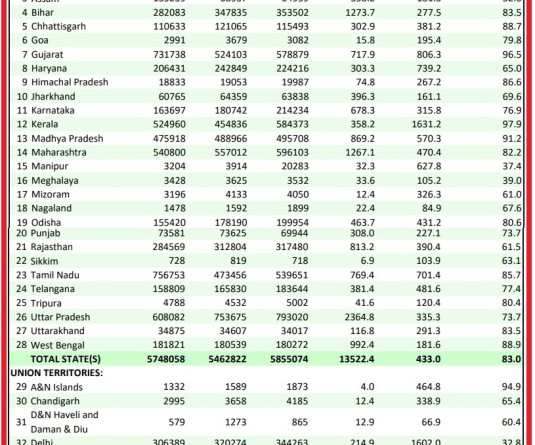Kohima Science College and GIZ-India signed an MoU on November 24. (Morung Photo)

Morung Express News
Kohima | November 24
The North-eastern Region is home to abundant species of flora and fauna. It is also home to extraordinary aquatic biodiversity, which includes 520 Fish Species (35 endemic), 186 molluscs species and 367 different dragonfly among others.
This statistics was made available during the two-day international workshop on current and traditional practices for sustainable management of aquatic ecosystems which got underway at Kohima Science College (A), Jotsoma on November 24.
The workshop is being organized by the Indo German Bilateral Cooperation ‘Protection and Sustainable Management of Aquatic Resources’ in the North-eastern Himalayan Region of India (NERAQ) with Kohima Science College (KSC) to bring the importance of traditional knowledge for climate resilient aquatic ecosystems management into sharp focus.
According to the background of the workshop, while NER supports about 50% of the country's biodiversity which is home to 130 major tribal communities.
“Aquatic ecosystems, in particular, are significant for nutrition security and income for a significant size of the local population in the region, yet very little is known about current and traditional practices and their impact to the sustainable and climate resilient management of these environs,” it observed.
Traditional practices in aquatics have been steadily eroding due to many reasons and being replaced with non sustainable and over exploitative ones. Other factors are population growth, change in lifestyle patterns, over exploitation and impacts of climate change. Indigenous knowledge systems and practices which have been passed on through generations are the basis of indigenous resilience and are focused on local livelihoods, security and wellbeing.
Ved Pal Singh, IFS, Additional PCCF, Department of Environment, Forest, and Climate Change, Government of Nagaland said aquatic ecosystem is one area which remains neglected and over exploited. In terms of neglect, Singh said the pollution in different forms meted to the aquatic ecosystems also lack cut policy recommendation while keeping in mind that the resources in these areas play a huge role in the ecological services, livelihoods and food security and play buffer roles in mitigating calamities against environment.
Singh said good scientific research and data are irreplaceable forms for influencing policy change and management. Recommendations that come about through information backed by data and scientific research were crucial for public policy intervention which he urged technical, research institutions to take up.
Traditional practices, he added, must be imbibed as much as possible while stating that in Nagaland, natural resources were owned by the communities, therefore, bringing the common man to play their part in honouring these resources will bring change as far as protection of Aquatic resources was concerned.
During the programme, principal, Dr Temjenwabang, KSC also delivered welcome address. The inaugural address was delivered by Dr Thomas Lennartz, Co Lead, Climate Change and Circular Economy Group, GIZ-India. He said that GIZ India is working in four North-eastern States of Assam, Manipur, Meghalaya and Nagaland under the Indo-German project on Protection and Sustainable Management of Aquatic Resources in NERAQ. Project Manager Patricia Dorn, NERAQ, GIZ-India also delivered welcome address.
During the inaugural session, an MoU was signed between Kohima Science College and GIZ-India where Principal, KSC, Dr Temjenwabang and Co-lead Climate Change and Circular economy Group-GIZ India, Dr Thomas Lennartz were the signatories.




